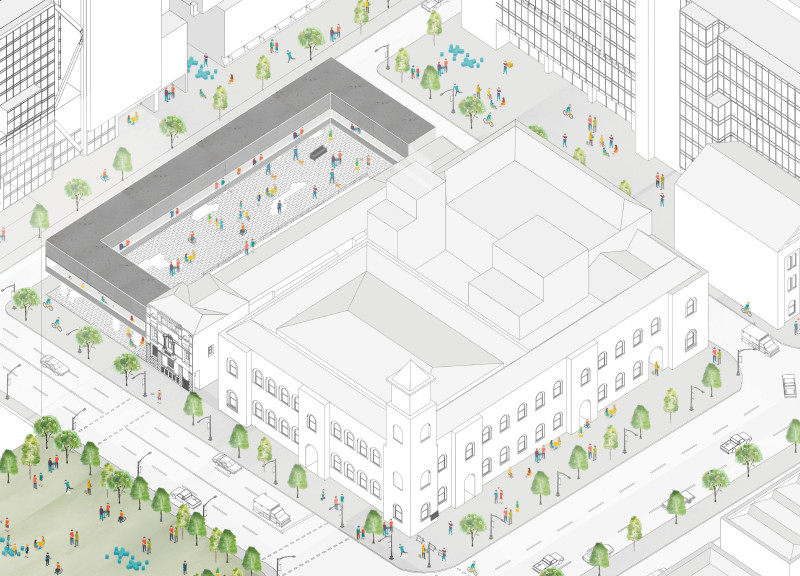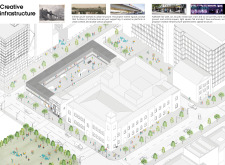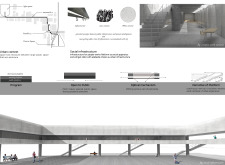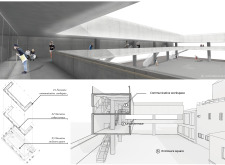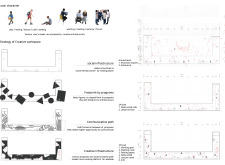5 key facts about this project
At its core, the project is designed to serve as a mixed-use development, combining residential, commercial, and public spaces to create a vibrant community hub. This multifunctional approach not only maximizes the utility of the available space but also encourages a sense of belonging and interconnectedness among its users. Each component of the design reflects an understanding of how spaces influence social behavior, aiming to enhance the daily experiences of those who inhabit and engage with the building.
The unique architectural approach of the project is evident in its innovative use of materials and forms. Utilizing a combination of reinforced concrete, glass, and sustainable timber, the design not only achieves structural integrity but also necessitates a dialogue between the built environment and the surrounding landscape. The choice of materials speaks to the project’s commitment to sustainability, as they are sourced from local suppliers and are designed to have minimal environmental impact. The integration of greenery—whether through strategically placed planters or green roofs—further emphasizes a connection to nature, offering both aesthetic and functional benefits such as improved air quality and energy efficiency.
Notably, the project features an open floor plan that encourages adaptability and flexibility. This design choice allows spaces to be easily transformed for various uses, catering to the changing needs of the residents and commercial tenants. The architectural designs emphasize natural light, with large windows and skylights that invite sunlight into the interiors, creating an uplifting atmosphere while reducing the reliance on artificial lighting. These windows not only contribute to energy efficiency but also offer occupants views of the surrounding area, effectively blurring the lines between inside and outside.
The project also places a strong emphasis on communal areas, offering shared facilities such as rooftop gardens, co-working spaces, and recreational locations that foster a sense of community. These design elements highlight the intent to create social interaction points, where individuals can engage with neighbors and participate in community activities. Such spaces are adorned with thoughtful landscaping and comfortable seating, creating inviting environments that promote relaxation and engagement.
Another significant aspect of this architectural design is the attention given to accessibility. The project adheres to universal design principles, ensuring that spaces are navigable for individuals of all ages and abilities. This aspect not only demonstrates social responsibility but also enhances the overall functionality of the design, making it inclusive for everyone.
In analyzing the architectural sections and plans, it becomes evident how the integration of residential and commercial spaces was meticulously considered. Each floor of the structure is intentionally designed to promote interaction, with commercial units situated on the ground level to activate the streetscape, while residential units are placed above to provide privacy. This layered approach enhances the vibrancy of the area while offering a comfortable living environment for residents.
The architectural ideas presented in this project serve as a blueprint for future developments in urban areas. By prioritizing sustainability, community engagement, and inclusivity, it sets a commendable precedent for balancing aesthetic appeal with functional design. Readers interested in exploring the nuances of this project are encouraged to delve into the architectural plans, sections, and design details to appreciate the full scope of its innovative contributions to contemporary architecture. Engaging with these aspects will provide a deeper understanding of how such architectural endeavors can shape the fabric of urban living, making it not only more functional but also more human-centric.


